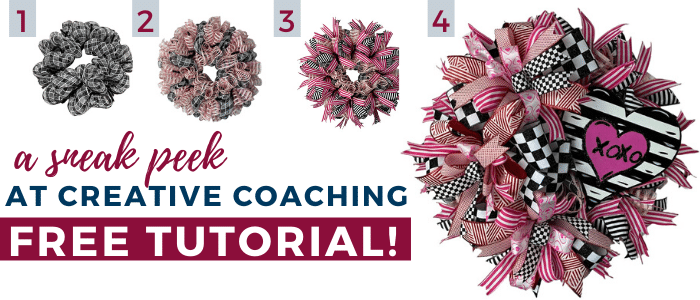Learning how to price your handmade items can be an intimidating and confusing process. This post breaks down the factors that you need to consider when pricing handmade products to sell.
Hey, y’all! Do you find yourself wondering “how much should I charge for my handmade goods”?
One of the most difficult things to determine when you are running a business and selling physical products is how much to charge. Learning how to calculate the right price for your handmade items is crucial to being able to stay in business.
Don’t Overcharge But Don’t Undersell Either
It’s simple.
If you don’t charge enough for your products, you can’t cover your costs and won’t be able to afford to stay in business.
On the other hand, if you charge too much for your products, people won’t buy them and you won’t make enough money to be able to afford to stay in business.
Finding that sweet spot for pricing self-made products is SUPER important. For that reason alone, coming up with prices that are reasonable for your business is a huge topic of conversation among Craftpreneurs.
In order to do this well, you seriously have to stop thinking like a crafter and start thinking like a business owner – because ultimately, you are running a business.
It may be a business doing something you love, but it’s still a business and it needs to be run as a business rather than as a hobby (those are two VERY different models!).
Today, I am going to share with you 6 different factors that you need to consider when pricing handmade items. Check out these 6 things to consider when calculating a price for your handmade items.
Factors That Determine How To Price Your Handmade Items
So let’s talk about pricing a product!
Several different elements contribute toward the cost of your item – some are more easily tangible (ex: cost of supplies) while others are more difficult to determine (ex: cost of your time).
This post will guide you in determining how to consider and calculate each of these factors into your final price.
Cost of Supplies
Simply put, you have to invest in your business in order to make money. But, at the same time, it’s important to know exactly how much you are spending on supplies. If you are spending too much on your materials, that hinders your ability to sell your product at a fair price while still making a profit.
Let’s look at a handmade wreath. These materials expenses include EVERYTHING you need in order to create your wreath. Some ideas of materials to factor in for expenses include:
- Wreath frame
- Mesh
- Ribbon
- Florals
- Embellishments
- Floral picks
- Sign
- Greenery
- Hot glue
- Pipe cleaners
- Wooden sticks
- Sticky tabs
- Any other supplies you used to create your product
I highly recommend never paying the full retail price for your materials. Save money by either purchasing your materials at a wholesale price or buying them in bulk while on sale.
Business Expenses
These expenses can be slightly harder to figure out than the cost of supplies. However, they are JUST as important when calculating what to price handmade items to sell.
Your business expenses will vary depending on where you decide to sell your items (online shop, craft show, your own storefront, etc). Here is a list of example business expenses to guide you in starting your own list of your particular business’s expenses.
Adjust this list as you need to in order to calculate an accurate cost:
- Seller fees
- Shipping supplies (boxes, tape, bubble wrap, packing slips, mailing labels, etc
- Shipping costs
- Gas
- Website fees
- Classes or trainings
- Overhead
While I imagine you know that the term “overhead” means business expenses, do you know what it exactly includes? Overhead are those business expenses that aren’t directly related to producing the product you are selling.
For example, overhead expenses include things like:
- Accounting fees
- Marketing fees (such as advertising)
- Utilities
- Travel expenses
- Rent
- Salaries for anyone you have hired
- Taxes
Your Labor
The cost of your own time is just as important of an expense as the other two major groups of expenses. It’s the main factor that post craftpreneurs tend to forget to calculate into their final price.
Anyone who runs a business should get paid because the time spent creating your products is worth something.
Figuring out your labor rate is the hardest factor to determine when calculating prices for your handmade items. You have to ask yourself: How much is my time really worth?
There are a couple of ways you can figure out this cost. You can either set a flat fee for each product as your labor rate or you can use a percentage fee on each product you sell as your labor rate.
Find what works best for you!
Pricing Is Just One Part Of The Marketing Cycle
The marketing cycle is a nonstop process that small businesses go through when finding and keeping customers.
Every successful business follows a very similar marketing routine which includes these five key stages:
Market Research
Take the time to study your customers and your competition.
Study everything you can about them from where they sell their products to their product price range to how quickly their products sell. If you notice something about a seller like high prices with no sales, that will alert you that the product is overpriced and many of their customers don’t see the value in it.
Work to price your product around the middle of the price range you found during your research.
Product Development
After you have conducted your research and have come up with a solid product idea, it’s time to put it together! Use your market research to adapt your product to meet your customer’s needs and wants.
Beta Testing
While your product may be amazing, I would highly recommend beta testing your product with your potential audience to get their opinions and possibly record a few testimonials.
Test out your marketing message to find your customers and inspire them to make a purchase.
Selling The Product
It’s time to sell! Post your product on your online shop or your storefront along with the testimonials so your customers can start to buy them.
The cycle doesn’t stop there, though.
Retargeting
Work to develop relationships with your customers to help ensure satisfaction as well as get feedback that you can use to fine-tune your future product and marketing efforts.
How To Calculate The Price Of Your Handmade Items
Now that you have an idea of how to price your handmade items to sell, use that information and plug it into this simple formula to come up with the magic number that will be your price.
I hope today’s post helped you begin to understand how to price handmade items to help (and keep) your business successful!
Still looking for some more help?
In my Business Coaching class, I help Craftpreneurs start and grow their online wreath business so that they don’t have to worry about only selling to their neighbors. Still not convinced? Read this blog: Imposter Syndrome.
Share your favorite wreath pricing tips with us over at the How To Make Wreaths Facebook Group. We’d love to hear your ideas or feedback! If you need more help pricing your wreaths we have a full detailed lesson all about pricing in our Business Coaching Group.
If you are interested in more info on learning how to sell wreaths, how to make wreaths, where to buy supplies, and being in a community of like-minded crafters, check out our Creative Coaching Subscription Group.
Read Next:
- How to Boost Engagement with Facebook Live
- Helpful Tips for Creating Multiples of Your Wreath Design
- How to Build an Email List to Boost Your Sales








